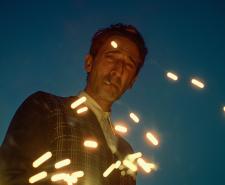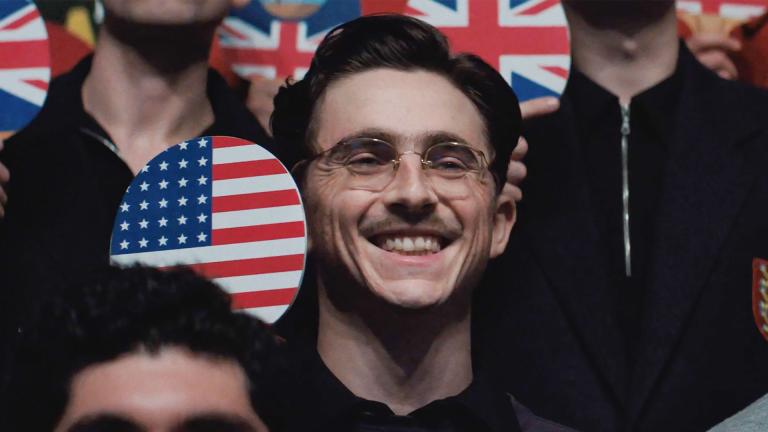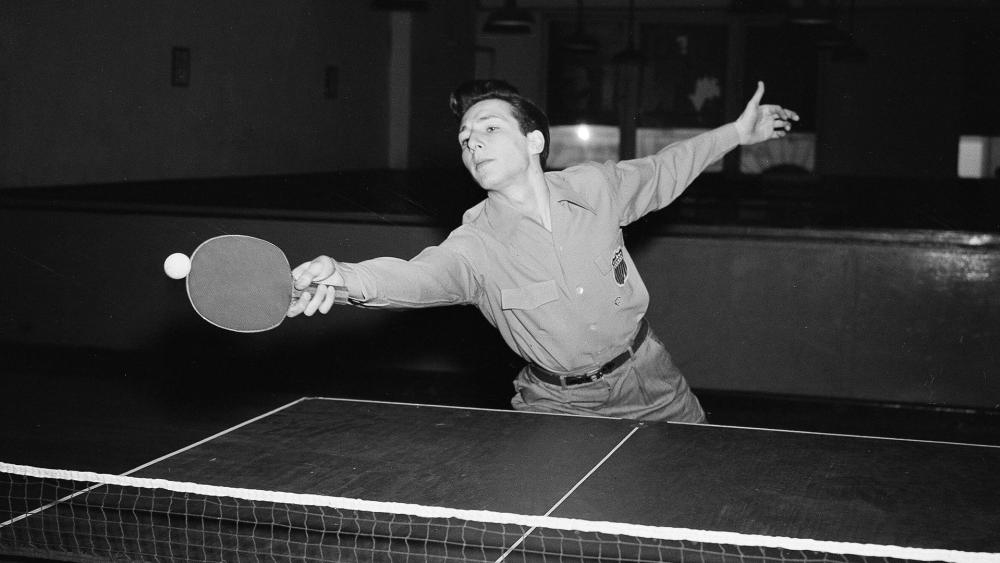
Read more about Popular Culture

Panama hat at a tilt, a red hardbat in hand and a hundred-dollar bill to check the net height. If table tennis ever had a ringmaster, it was Marty Reisman. The legendary New Yorker didn’t just play ping-pong. He performed it. Now, his outsized life is the spark behind Josh Safdie’s new A24 film, Marty Supreme, starring Timothée Chalamet.
But who was he really? Join us at Sky HISTORY as we explore the man, as well as the myths and the legends from his life in greater detail.
Reisman came up on Manhattan’s tables in the 1940s and never lost the taste for theatre. He opened for the Harlem Globetrotters basketball team with comic trick-shots, could split a cigarette (yes, literally) with a ping-pong ball at 20 paces, and would sometimes play sitting down or blindfolded.
Reisman wasn’t a novelty act, though. He was elite. He won U.S. national singles titles in 1958 and 1960, collected World Championship medals, and (in the most Marty move imaginable) returned at 67 to win the open U.S. National Hardbat Championship in 1997. He’s likely the oldest person to take an open national title in a racket sport.

If you’ve ever wondered why some bats look like stealth bombers and others like sandpaper on a plank, Reisman is your guide. He was the hardbat’s loudest defender and loved the old pimpled rubber that rewards timing and placement over sheer spin. When the sponge era arrived in the 1950s, he became its loudest critic, arguing that the new tech muffled the feel and the sound that made rallies legible to the crowd. People questioned him at the time but the hardbat revival that bubbled up in the 1990s and 2000s proved his point.
Today, Marty’s hardbats are legit treasures.
Table tennis didn’t stay stuck in the 1950s and that’s largely thanks to Marty Reisman. Ventures like Table Tennis Nation, which he helped front, brought the game into clubs and pop-up nights where fashionistas mixed with basement lifers. He made table tennis feel like New York again. A little smoky, a little glam and open to anyone who fancied a flutter.
Who better to play a handsome, confident 1950s ping-pong hustler than American-French heartthrob, Timothée Chalamet? He steps up as Marty Mauser (a fictional character very much inspired by the real Marty Reisman) in the American sports comedy-drama film, but don't expect a cradle-to-grave biopic. Safdie’s film is loosely inspired by Reisman’s world (the clubs, the comps, the immaculate side-part) and it leans into character study and comedy rather than the full picture. After a surprise world premiere at the New York Film Festival in October, early notices called it high-octane, funny and awards-bound. A24 rode that wave and is limbering up for a big Christmas Day release.
Three truths make Marty Supreme worth a watch.
First, style is substance. The clothes weren’t just clothes, they were advertising. In a sport often hidden in church halls and basements, he turned up dressed like a jazz bandleader. Marty Supreme respects that aura and folds it into the fabric of the film. It shares parallels with tennis, where dress codes, venue prestige and even umpire announcements have turned iconic.
Second, he proved skill and swagger can coexist. That’s why the film’s decision to prioritise real table-tennis mechanics (like training, footwork and proper strokes) feels faithful to the spirit, even when the plot takes liberties.
Third, he gave the sport a philosophy. Reisman wanted table tennis to be legible and thrilling for spectators, not just a blur of serves. By arguing for the hardbat, he was arguing for the crowd. It’s a stance that maps neatly onto Safdie’s mission to make ping-pong worthy of the big screen.
Every sport needs a rogue evangelist: the person who can walk into a room of sceptics and leave with three fans, a bar tab and a story you’ll repeat at the pub. Reisman was that for table tennis.
If Marty Supreme sends a fresh wave of viewers hunting YouTube clips of an old bloke in a fedora snapping a cigarette with a forehand, so much the better. The real Marty would have loved the attention.
Love profiles like this? Subscribe to the Sky HISTORY newsletter and get updates straight to your inbox.